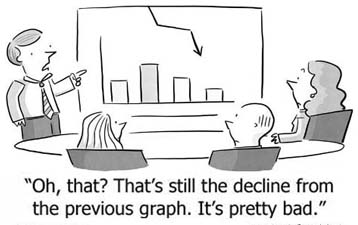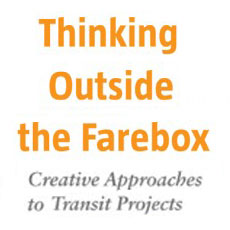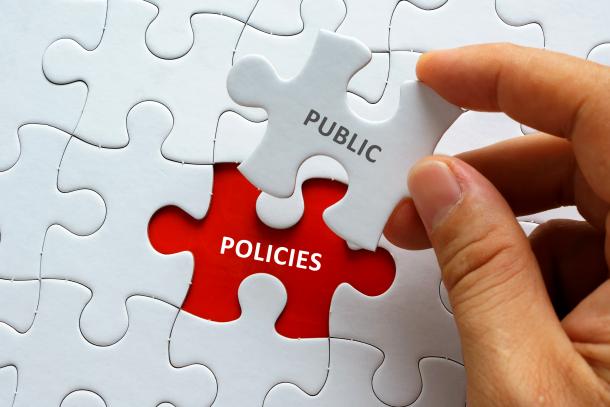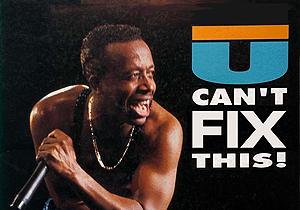“We are trying to better understand why the Sunrunner ridership drop was larger than anticipated,” PSTA CEO Brad Miller told our news outlet TampaBayGuardian.Com. In this lengthy article, we will cover ridership and other issues involving PSTA (the Pinellas Suncoast Transit Authority). For the first time, PSTA staff is speaking to us. We provide and analyze their claims in this article which is twice our normal maximum length article. So put your policy pants on and let’s get in the weeds. And bring your weed whacker!

After a string of both bad news and tragic conscience-shocking news (see also video), PSTA’s contends that the reason the Sunrunner’s ridership dropped 43% after fares were introduced on October 1st is that they didn’t have time to educate riders about how to pay those fares on board the bus.
“Staff was directed to charge fares earlier than we had anticipated,” Jacob Labutka, PSTA’s Planning Manager told Spectrum News 9 last week. “So we didn’t have as much time to educate the public on how to pay fares or what the fare structure would look like.”
But is that a plausible explanation for the immediate 43% plunge in ridership? Our news outlet, TampaBayGuardian.Com, broke the news of the size of the Sunrunner ridership drop, and how ridership is now at less than one third of PSTA’s initial forecast.
As payment, the Sunrunner accepts tap-enabled credit or debit cards, Apple Pay, Google Pay and its own Flamingo fares app and card. Therefore, it is hard to see how not being given enough time for “educating the public on how to pay fares” could explain this immediate 43% ridership plunge.
“If you have ideas on making the fare payment easier or other improvements I’d be interested in hearing them,” Miller told us. However, as shown above, it is already is quite easy to pay the fare on the Sunrunner, and PSTA decided against accepting cash payments. The Sunrunner is the only PSTA route that does not take cash payments. That’s a decision PSTA staff took, not its critics.
Also, accepting cash payments could cause yet another “bum’s rush” on to the Sunrunner because many downtrodden people are only able to pay with cash. Pinellas Sheriff Bob Gualtieri told the PSTA board last August that not charging fares on the Sunrunner brought crime and grime to St. Pete Beach, and a 400%+ increase in service calls. The situation was costing the Sheriff’s Office $10,000 extra per week, and it wasn’t sustainable. PSTA also had extra costs as PSTA staff rode the Sunrunner to tamp down problems.
As soon as fares were implemented on the Sunrunner on October 1st, at the suggestion of the Sheriff, these social problems evaporated instantly. But the traffic congestion that residents say the Sunrunner causes did not.

“Since I am not aware of any studies by the City of St Petersburg about 1st Ave N and 1st Ave S I can’t comment on what has happened on those streets without any data,” Miller said. “I suggest you speak with City leaders about this,” Miller added, referring us to the City of St. Petersburg.
The issue Miller was addressing with his statement was whether travel times have increased on 1st Avenues N and S after one travel lane in each direction was taken for Sunrunner use. It is still possible to use those lanes as a turn lane, but not as a travel lane. The corridor is the busiest east-west traffic artery in St. Petersburg.
What PSTA calls the “Central Avenue Corridor” is the traffic corridor in which the Sunrunner operates before heading south to St. Pete Beach. The corridor includes the one-way traffic arteries of 1st Ave N (westbound) and 1st Ave S (eastbound) as well as Central Avenue itself. Residents who drive the corridor daily during peak travel times have reported increased traffic congestion and longer travel times.
Six weeks after the Sunrunner service began, PSTA’s then-Director of Communications and Marketing Whitney Fox told the PSTA Board that it’s “really exciting to see that we are getting people out of their cars.” Given her excitement, the question becomes if traffic congestion is a concern for PSTA — or a goal.
And when did “getting people out of their cars” become a PSTA goal? Is it even a desirable goal? What does riding transit instead of driving do to those people’s productive or economic potential and satisfaction with their own lives?
“Regarding comparing the post COVID fare implementation ridership decline to this one, the 20% systemwide ridership drop in the fall of 2021 was based on comparing same month to same month,” Miller said. “The 40% drop your article cites on SunRunner is comparing September to October 2023, a different calculation. Baseball season ended and other seasonal effects may have contributed to this larger decline this time when fares were introduced. I don’t have the document in front of me but I think if you compare November 2022 to November 2023, the percentage drop is slightly less.”

However, the ridership decline continued from October to November of last year after fares were implemented on October 1st.
In addition, comparing November 2023 to November 2022 shows a lesser decline because the Sunrunner had just begun service in late October, 2022. Subsequent to November 2022, and as mentioned previously, the ridership rose as a care free population element in St. Petersburg discovered the fare free Sunrunner and rode it to the beach, bringing crime and grime.
This explanation for increasing ridership early on fits with what multiple law enforcement officers working in St. Pete Beach told the Guardian. They told us that it took a while before the Sunrunner brought crime and grime to St. Pete Beach (and Treasure Island). They also said that those problems ceased immediately when fares were introduced on October 1st.
“It’s inaccurate to state that I have been silent about the ridership drop as I have informed the Board at committee meetings,” Miller stated in response to our claim that the Sunrunner ridership decline has been swep under the rug. When asked if he provided “percentage declines in Sunrunner ridership in those Board committee meeting,” Miller did not answer.
“There is research on ridership elasticity when agencies increase fares, but none on going from fare free to charging fares,” an unnamed PSTA Planning Department staffer member told us through Brad Miller’s executive assistant.

While technically true, there is much and also very recent research on what happens when fares are eliminated. Therefore, an estimate could have been made based by simply taking those fare elimination results and “reversing them,” so to speak.
“For a 10% increase in fares ($2.25 to $2.475) we’d expect a loss of 4.3% of ridership,” the PSTA Planning Department staffer member also wrote to us.
With that estimate in hand, PSTA could have used the so-called Simpson-Curtin Rule of Transit Elasticity “in reverse” to arrive at a better estimate than the wildly inaccurate 10% ridership drop estimate PSTA did arrive at.
The so-called Simpson-Curtin rule is well-known in the transit industry. It also appears on the website of the American Public Transportation Association (APTA), an organization which PSTA is very vocal about its membership in. The Simpson-Curtain rule was formulated in 1968, it widely cited, and it should be known to PSTA’s Planning Department.
This frequently used rule-of-thumb postulates that a 10% increase in a transit fare results in a 3.3% decrease in ridership.
PSTA told us that “research also shows that the fare elasticity is higher among discretionary riders,” and such riders are disproportionately present on the Sunrunner. That’s why PSTA’s model mentioned previously predicted a 4.3% decrease (not the 3.3% Simpson-Curtin rule decrease) in transit ridership as a result of a 10% increase in fare.

Had PSTA then run their fare increase estimation model “in reverse” so to speak, down to zero fare, they would have found the ridership 43% higher at zero fares than at a fare of $2.25. Simple math would then show that going from zero fares to a fare of $2.25 would result in a ridership drop of 30%. That 30% number is much closer to the 43% that reality demonstrated than the 10% decline in Sunrunner ridership they forecast.
PSTA told us that they had been expecting a ridership ridership decline of “between 5 and 25%,” but no records from before the fare increase show that any estimate other than the 10% ridership decline estimate existed within PSTA before fares were imposed. In any case, the 30% estimate arrived at by running their own model in reverse is still a better estimate than any estimate PSTA produced. The 30% estimate is also well outside of their asserted range of a “between 5 and 25%” ridership decline.
“While free fares on public transit might boost ridership, these policies haven’t necessarily gotten cars off the road,” according to urban mobility infrastructure vendor Modeshift. “Those additional riders were shown to be people who would otherwise opt for more sustainable modes of transport such as biking or walking, meaning that there wasn’t a significant reduction in the number of drivers on the road.”
So much for the idea that a fare free Sunrunner “gets people out of their cars” as PSTA’s Fox claimed.
There is no doubt some degree of seasonality to the Sunrunner’s ridership, as PSTA contends. But causality far outweighs any seasonality. That causality was that free fares caused certain downtrodden people to bring crime and grime to the beach communities.
Apart from the downtrodden, another major group of fare-free Sunrunner riders were the “extended parking shuttle” riders. We spoke to several of them, groups of people who parked for free somewhere along the route and then rode the Sunrunner for free to the beach or downtown in order to save on parking. They told us they did so because the Sunrunner was free.
The novelty of the Sunrunner may have worn off already when noxious bums starting riding the Sunrunner. The financial calculation certainly stopped make any sense once fares were introduced, and these “extended parking shuttle” riders now simply drive to their destination and pay for parking. The larger their group, the less sense it makes to use the Sunrunner as an extended parking shuttle any longer.

In the distant past, transit advocates frequently said that transit was for those “who need it or want it” — now the local policy goal seems to be to force people to use it in order to keep PSTA afloat.
Will PSTA ever be able convince a skeptical public that it cares more about reality than using tax dollars to generate highly questionable narratives?
As always….the Guardian reports and the readers decide. Please like our Facebook page to find out when we publish new stories.
Below: putting the public over policies



